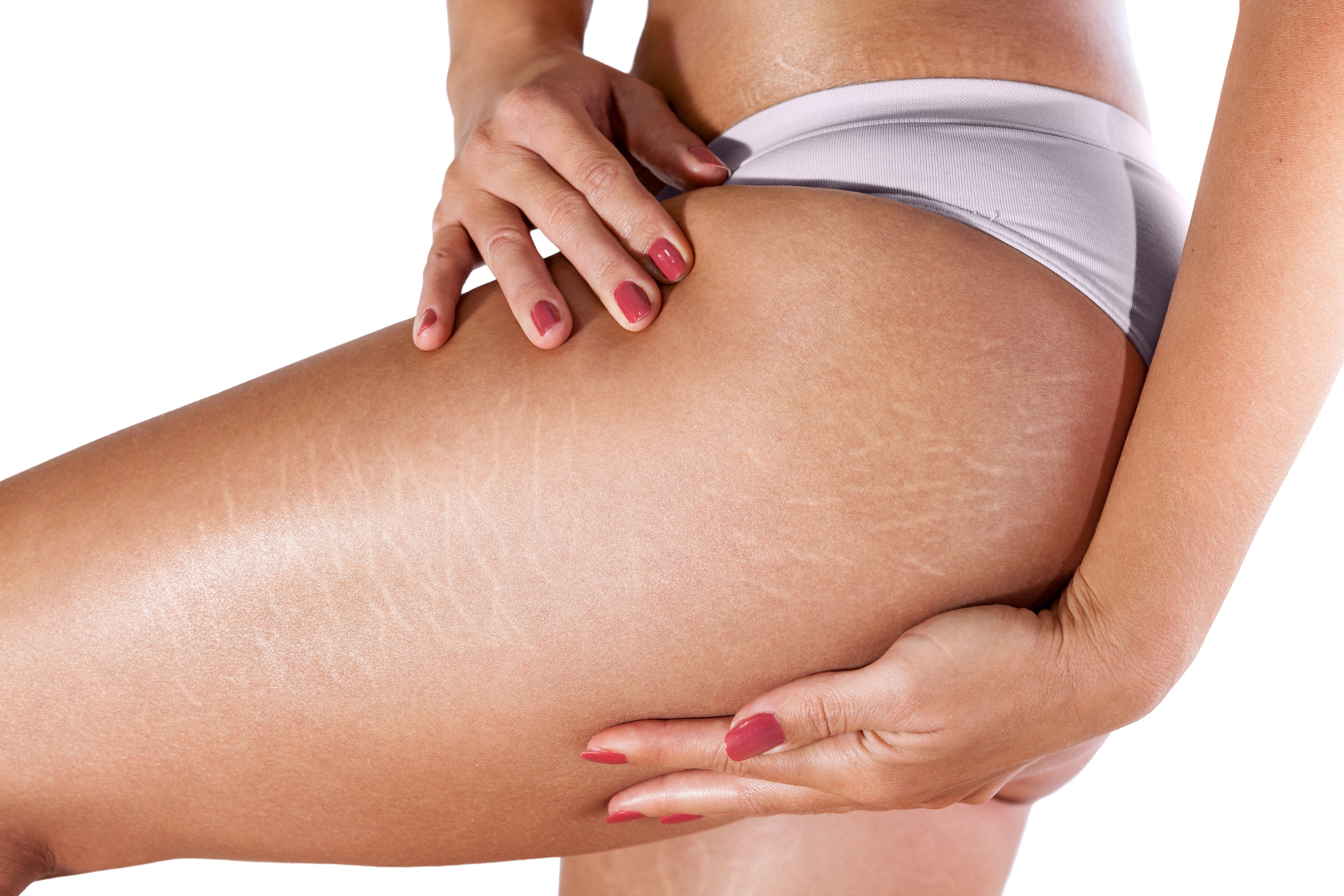It Took a Health Crisis for Me to Embrace My Stretch Marks
I've spent years hating the scars that society deemed unattractive. Now I'm celebrating them.

I always resented my stretch marks — until a health crisis helped me realize they were signs of growth. / Photograph courtesy of Getty Images
I think I was in college when I first noticed the white lines zigzagging across my ass. It was the middle of my senior year, right after my first bout of moderate depression, when I’d numbed myself with 10 seasons of Grey’s Anatomy and cried a lot about hypotheticals.
It makes sense, in my head, that that’s when the stretch marks first appeared — a time when my body was reflecting my brain’s sluggishness.
Yet that could be just my memory trying to smush the puzzle pieces of cause and effect together so they fit. The marks could easily have come about later, when I was working a hectic job that didn’t leave me time to get a few reps in at the gym. Work would indeed be the thread that wove through every new emergence of streaks on my hips, upper thighs, and butt. Every few months, I would bump up against a particularly chaotic time in the year, and the routine of spin and yoga that I’d dutifully followed would fall apart, my “gains” erased in the blink of a sad desk dinner, my skin reflecting what I considered to be my perennial lack of discipline.
I have always viewed my stretch marks through the damaging lens of conventional beauty. Sudden weight gain, the Internet told me, was their likely cause, and my less flattering appearance their effect. My vigilance had slipped, and now I would permanently pay for it. Worst of all, other people could see them (only if I wore a bikini, but of course my mind was constantly nudging, whispering that everyone could tell). They would know that I — at 21 and then 25 and then 28, the ages when blogs and advertisements and friends’ nosy parents told me my body should have been pristine — was instead covered with stains I couldn’t bleach out.
Of course, this was a symptom of a larger illness. I’d loathed my sizable butt and thighs since the puberty switch had turned on when I was 12. During that era, big breasts were the traits that stimulated desire, and I felt I was being told my lower body needed to take up less space in order for boys to like me, to be validated as a woman. The stretch marks were just an added insult — a reminder that I could be smaller if I tried, that I actually had successfully shrunk myself down many a time, but, through my own personal failings, couldn’t maintain the ideal.
I’m surprised I didn’t try to make them fade. Outlets ranging from WebMD to Cosmopolitan have recommendations on how to get rid of the pesky marks. I’m sure they get a lot of traffic from women desperately searching for a cure-all. Because the age-old assumption is that these skin grooves are unseemly to look at, and we must smooth and shape and prune our bodies so other people can gaze upon them easily, free of the discomfort that comes from realizing their subject is not an object of desire but a flawed human being.
Instead, my erasure approach was to work harder, to be better. I found a gym that was open 24-7 so I could jump on the elliptical at insane hours once I was done working. I cut out snacks and stopped buying ice cream and quit drinking. I got a job that required me to take fitness classes, so I could kill two tasks with one workout. My glutes became tight and my waist even tinier than it had already been. I had achieved the ideal.
And then came the cost. I got hurt. So hurt that debilitating pain shot down my leg and into my foot, whether I was lying down or sitting or standing or screaming. It became so constant that I sank again into depression, considering whether a life of chronic pain was worth limping through. I ate a meal a day, if I remembered.
Before I had surgery to remove pieces of the disk that had exploded in my spine, a nurse asked me to step on the scale. I was down to the weight I’d been at when I went off to college at 18, the last time I’d restricted food. I had other worries that day, but the number stuck in my mind, an alarm that I needed to change my life if I was going to survive this ordeal.
As I am beginning to recover — slowly, haltingly, frustratingly — I’ve started gaining weight. I’m ravenous all the time. My muscles, having been starved for so long, wanted to gorge and gorge some more. (PSA: This is why diets don’t work.) As I ate and ate and ate and walked and ate, I’ve watched my skin balloon outward. New stretch marks have emerged, sprinting across my hips and thighs like they’re trying to outrun a storm. Apparently, my incision would not be my only scar.
But, instead of glaring at these new marks, I grinned. I was ecstatic even. They weren’t the vestiges of an accident but evidence of growth, of a bigger, yes, but also healthier body. I wasn’t resentful of the older marks anymore either. Together, the old and the new made my own little constellation that showed me where I’d been and where I was going.
In celebration, I bought a new bathing suit, a one-piece with a back that covered my incision (my doctors told me the new skin might permanently tan or burn if it were left out in the sun) but sides that cut high above my pelvis. My college friends take a camping trip every year, usually to Rehoboth Beach, and I was going for the first time since I’d graduated, so I needed a suit that fit better than my 10-year-old bikinis. I’d ordered it online, guessing at the size, and it ended up being a bit too tight. Instead of panicking, I walked into the brick-and-mortar store and ended up getting a suit that was two sizes larger. I didn’t care in the slightest.
When the beach weekend arrived, I wore shorts over my suit for a few hours, growing a bit anxious about revealing so much of myself to the world. But the water beckoned. I slid off my shorts, flashing my stretch-mark-covered skin, and dared to look around. No one stared or even noticed. As I walked toward the waves rolling up to meet me, a grin stretched across my cheeks.


